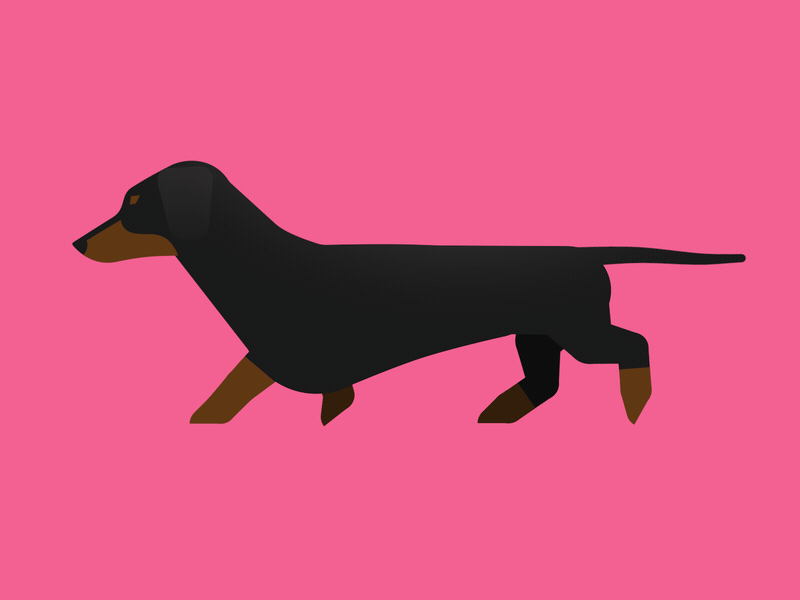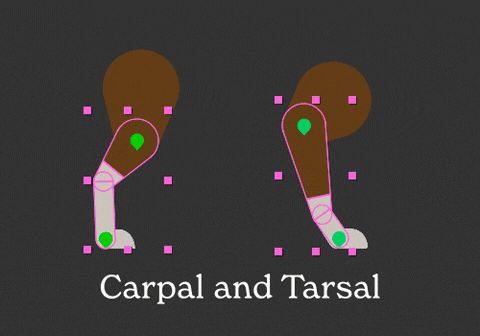rigging dogs in after effects
If you’re rigging a dog in After Effects for the first time, here are a few tips.
It’s pretty obvious that a dog will not just have two pairs of human-like legs. At first glance, it looks like their back legs bend the other way at the knee. But simply setting the back legs to bend the other way won’t give you very dog-like results. A dog’s legs don’t really bend ‘backwards’ at all.
You can think of dogs as walking only on their toes - the rest of their foot is raised up, so that it’s effectively part of their leg, and the ankle (tarsal joint) is the one that then looks like a backwards-bending knee.
The front legs, or should we say arms, do bend backwards, and that joint is called an elbow. The upper section (bicep) is quite short and visually joins into the body. The lower section (forearm) is longer. Again, the paw is really just the ‘fingers’ and the ‘palm’ extends up to a ‘wrist’ called the Carpal joint that often looks like a knee. These carpal joints can bend a little way backwards as well as forward.
Imagine yourself walking on all fours but only on your flat fingers (not palms) and tip-toes. The ankles and wrists are always up like this, unless it’s a run when they start to be used to cushion the greater impact.
In the real world, a dog’s shoulder joint moves around quite a lot - more than in humans. See how even this stubby little dachshund has very mobile shoulders:
But you can get pretty realistic movement without needing 3-bone IK or worrying about hyper-mobile shoulders. If you use standard 2-bone IK, you will need to choose whether to use it for the elbows and knees OR the carpal and tarsal joints:
…I’d recommend using IK for the elbows and knees, but I see a lot of mixed examples 👇 where the front limbs are rigged around the elbow, and the back limbs around the tarsal joint. I’ve done this myself a few times too.
Cute little Karl, I got to animate for the Kaia Health app using @LottieFiles and the brilliant @limbertools! 🐶 pic.twitter.com/viDA1jTA1G
— Rosie Phillpot (@rosiephillpot) April 16, 2021
Part of the reason why I recommend using IK for the knees and elbows, is you can then rig your own FK feet and parent the IK controllers to the heels. Works for humans too! It’s easier to understand what I mean in After Effects, so here’s an AEP.
If the design is more stylised and the legs are quite stubby, you can often get away with less realism and fewer joints. There are no rules! This one doesn't even use IK at all:
Like most mammals, dogs have an enormous amount of flexibility in their bodies. Here’s a great breakdown of dog locomotion by Felix Sputnik.
I’ve animated a lot of dogs using Limber and I prefer using it’s simple 2-bone rigs over anything more complex. With 3-bone IK, it can feel like the rig has a mind of it’s own and you struggle to get the poses you want.
Share this post:






